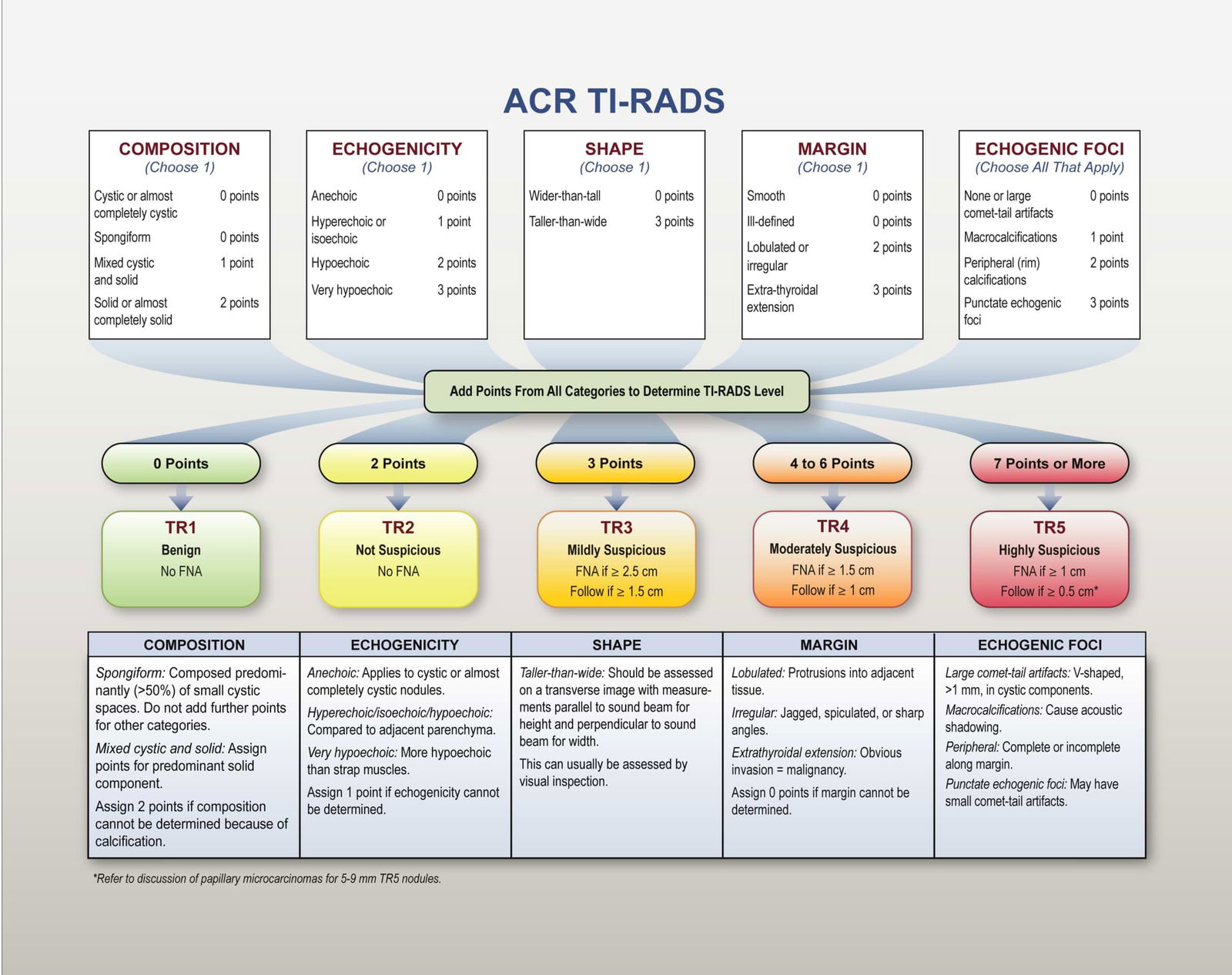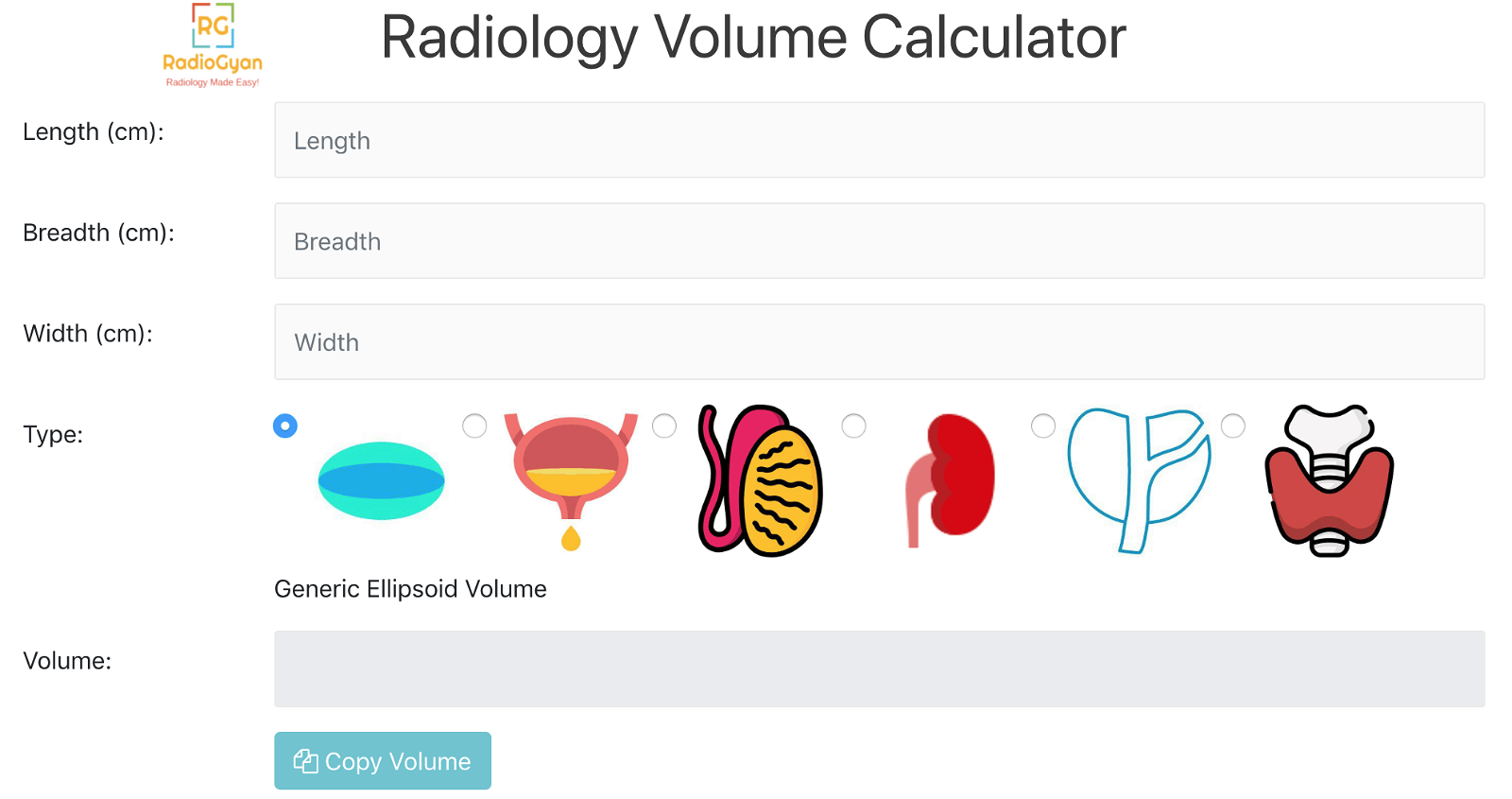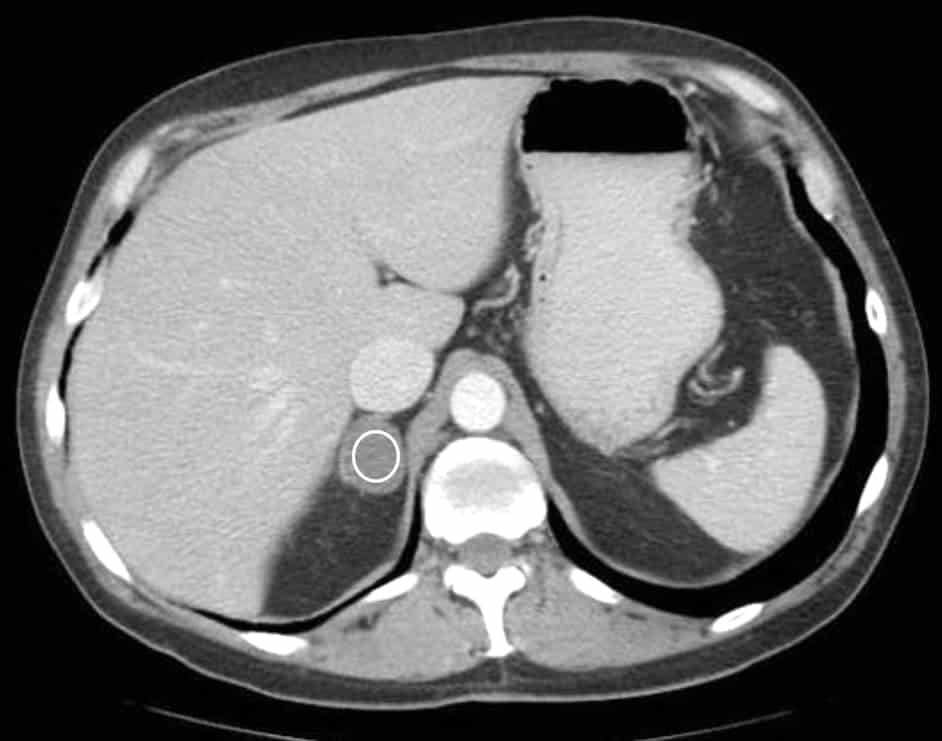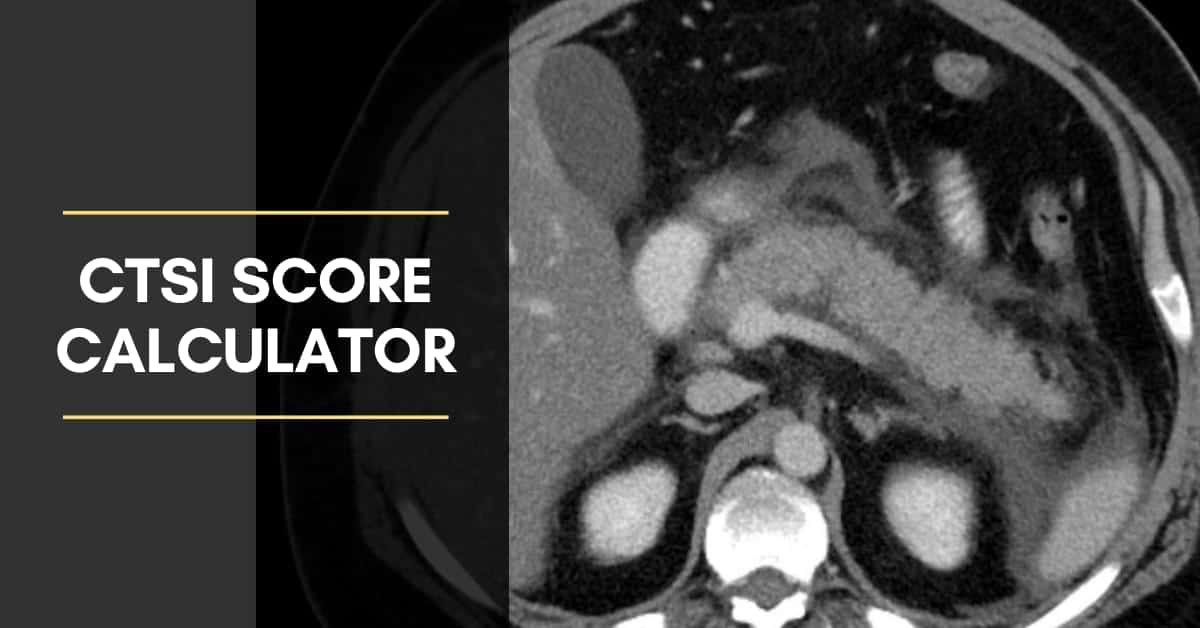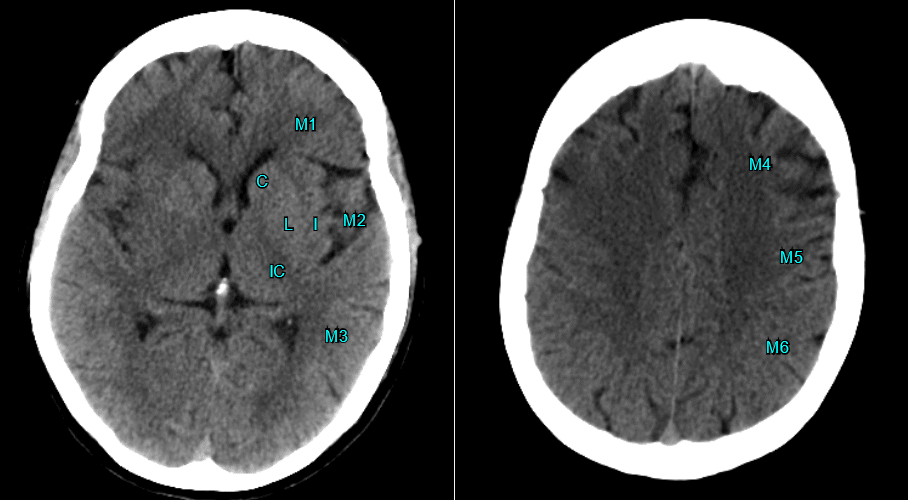TIRADS Classification Table
Category Points Suspicion Risk of Malignancy Guideline
TR1 0 Benign 0.3% No FNA
TR2 2 Not suspicious 1.5% No FNA
TR3 3 Mildly suspicious 4.8% If ≥2.5 cm: FNA If ≥1.5 cm:Follow up at 1,3 ,5 years
TR4 4-6 Moderately suspicious 9.1% If ≥1.5cm: FNA If ≥1 cm:Follow up at 1,3 ,5 years
TR5 7 or more Highly suspicious 35% If ≥1 cm: FNA If ≥0.5 cm follow annually for 5 years
FNA- Fine Needle Aspiration.
Risk of Thyroid Malignancy depending on TIRADS score
TR 1 thyroid nodules have a 0.3 % risk of malignancy.
TR 2 thyroid nodules have a 1.5 % risk of malignancy.
TR 3 thyroid nodules have a 4.8 % risk of malignancy.
TR 4 thyroid nodules have a 9.1 % risk of malignancy.
TR 5 thyroid nodules have a 35 % risk of malignancy.
Caveats for Thyroid Ultrasound Calculator
If rim calcifications obscure the nodule completely, choose composition to be “solid” and echogenicity to be “isoechoic”.
If the margin cannot be determined, choose “ill-defined margin”.
If echogenicity cannot be determined, choose “isoechoic”.
If composition cannot be determined, choose “solid”.
Punctate echogenic foci and taller-than-wide features have the highest points so carefully evaluate these.
Key points from the original TIRADS article:
Composition
Cystic or almost completely cystic nodules are generally benign, as are spongiform nodules predominantly composed of small cystic spaces. Solid components with suspicious characteristics may warrant further evaluation for malignancy.
Echogenicity
Echogenicity evaluation involves comparing a nodule’s reflectivity to adjacent thyroid tissue, except for very hypoechoic nodules where strap muscles serve as a reference point. Special consideration is given to anechoic nodules.
Shape
A taller-than-wide shape, when assessed in the axial plane by comparing height and width measurements, can be highly specific for malignancy.
Margin
Ill-defined or irregular margins, especially with protrusions or lobulations, should raise suspicion. Extension beyond the thyroid border should also be considered.
Echogenic Foci
Different types of echogenic foci carry varying levels of suspicion. Punctate echogenic foci within solid components are particularly concerning and should be evaluated in conjunction with other features.
Papillary Thyroid Microcarcinomas
Biopsy of nodules smaller than 1 cm is generally not recommended; however, exceptions may be made based on specific circumstances. Guidelines recommend against routine biopsy of such small nodules unless actively surveilling, ablating, or considering lobectomy for papillary microcarcinomas.
Measurement and Documentation
Accurate sizing and detailed documentation of nodule location are crucial for monitoring and comparison over time.
Definition of Growth
Significant enlargement is defined as a 20% increase in at least two nodule dimensions with a minimal increase of 2 mm or a 50% or greater increase in volume.
Timing of Follow-Up Sonograms
Follow-up intervals depend on the ACR TI-RADS level of the nodule. More suspicious lesions may require more frequent monitoring.
Number of Nodules to Biopsy
Biopsy of two nodules with the highest suspicious appearance is recommended to avoid unnecessary procedures and patient discomfort.
Assessment of Cervical Lymph Nodes
Specific features indicating metastasis should prompt FNA of suspicious nodes along with up to two nodules meeting biopsy criteria based on the ACR TI-RADS guidelines.
Ultrasound Thyroid Score Explained
For a more detailed guide with examples, refer to the dedicated article here:
TIRADS ACR : What radiologists need to know!
More Resources

